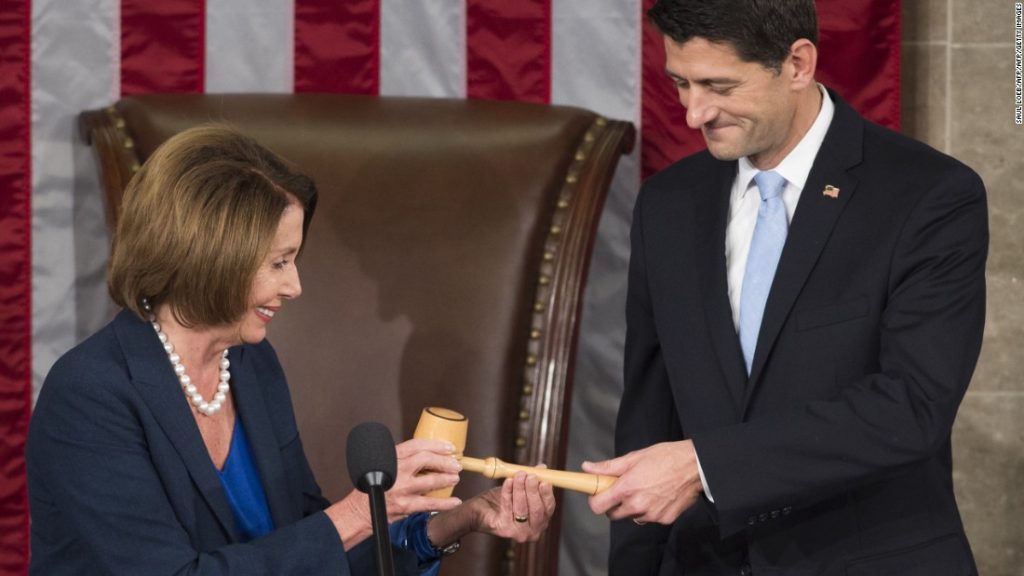The 2018 Midterm Elections
Courtesy of CNN
By Alex Santana
On November 6, 2018 millions of Americans will vote to elect all 435 members of the U.S. House of Representatives, six non-voting members of the House representing Washington, D.C. and the five U.S. territories, 35 members of the U.S. Senate, 39 state and territorial governors, 87 state legislatures, as well as thousands of county and city elected officials across the country. Most Americans will be paying close attention as to whether Democrats take the majority of seats in the U.S. House. Democrats currently hold 193 seats while Republicans hold 236. Democrats would have to flip 25 Republican-held seats while at the same time not losing any of their own seats to take the majority which is 218.
Historically the party in control of the White House loses seats in the U.S. House during midterm elections. Also playing an important factor in this election cycle is the fact that 39 Republican incumbents, including eight committee chairmen, will not be seeking re-election in November. The most notable of these is the Speaker of the House, Paul D. Ryan (R-WI), who is retiring after almost two decades as a congressman and three years as Speaker. If Republicans keep the majority, many believe the next Speaker could be current Majority Leader Kevin McCarthy (R-CA) or current Majority Whip Steve Scalise (R-LA), who was shot and wounded during an assassination attempt on members of the Republican Congressional Baseball Team during a practice in June 2017. If Democrats take control of the House, many see Minority Leader Nancy Pelosi (D-CA) returning to the position of Speaker which she held from 2007 to 2011 during the end of President George W. Bush’s second term and most of President Barack Obama’s first term. January 2019 will mark Congresswoman Pelosi’s over 30 years of service to her San Francisco constituents. The first female Speaker of the House previously served as Minority Leader from January 2003 – January 2007 and faces some possible competition by younger members of the Democratic caucus who want to see a new leader after almost 15 years of Pelosi’s control over the caucus. Several Democratic candidates for the House of Representatives have stated they would not vote for Pelosi as Speaker if Democrats take the majority.
In the Senate Republicans currently hold 51 seats while Democrats hold 49. With one-third of seats being filled every two years, Democrats must protect 26 seats this election cycle, including two independents who caucus with the Democrats, versus just nine for Republicans. Defending all 26 seats will be difficult for Democrats since President Trump won 10 of the 26 states during the 2016 presidential election against former U.S. Secretary of State Hillary Rodham Clinton. These states are Pennsylvania, Michigan, West Virginia, Missouri, Indiana, Montana, North Dakota, Ohio, Wisconsin, and Florida. Perhaps one of the costliest watched races of the 10 will be between Florida’s three-term Democratic Senator Bill Nelson and the sunshine state’s two-term republican governor Rick Scott. The 75-year-old Nelson and 65-year-old Scott have both raised millions of dollars for their campaigns and have launched attack ads focusing on each other’s record in Washington and Tallahassee. Scott spent over $90 million of his own wealth on his two successful races for governor and is estimated to be worth over $200 million. Nelson has served Floridians in some type of elected office for over 40 years and many believe the race will be very close, especially due to the large number of Puerto Ricans living in Central Florida as a result of last year’s Hurricane Maria.
With 81-year-old Senator John McCain (R-AZ) suffering from brain cancer and not being able to vote on any legislation or nominations since December 2017, Republicans would need to gain several more seats to prevent any obstacles to confirming all pending executive, ambassadorial, and judicial nominations. The most important pending nomination before the Senate is President Donald Trump’s choice of 53-year-old Judge Brett Kavanaugh to succeed Justice Anthony M. Kennedy on the U.S. Supreme Court. Judge Kavanaugh, who served as Catholic University’s Columbus School of Law 2018 Commencement speaker, will appear before the Senate Judiciary Committee on September 4th. It is likely that a confirmation vote for Judge Kavanaugh could be scheduled by Senate Majority Leader Mitch McConnell (R-KY) sometime in the middle of September before the U.S. Supreme Court’s 2018 term begins on Monday, October 1st. If Judge Kavanaugh is confirmed, he would be President Trump’s second pick on the nation’s highest court after Justice Neil Gorsuch, who succeeded the late Justice Antonin Scalia. Some members of the Senate will not be returning in January to continue pushing the Republican agenda. Foreign Relations Committee Chairman Bob Corker of Tennessee, Arizona Senator Jeff Flake, as well as Senate President Pro Tempore and Finance Committee Chairman Orrin Hatch of Utah will be the three Republican Senators not seeking six more years in Washington. Senator Hatch will be leaving office after over 40 years in the Senate and his likely successor is former Massachusetts Governor and 2012 Republican presidential nominee Mitt Romney.
If history is any indicator of what will happen in November, Republicans will most likely lose the House to the Democrats, who have been out of power for almost a decade now. But perhaps a possible sign of hope for anxious Republicans both in Washington and across the nation could be the midterm elections of 1934, 1998, and 2002. In these three elections the President’s party actually gained seats in the House instead of losing to the opposition party. Will 2018 be another exception?









